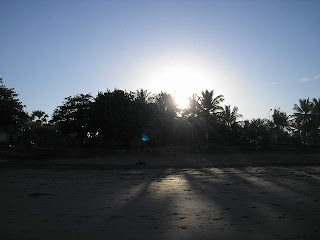最低でも、国民年金を受け取り始める65歳までは、廃業しない予定です
現時点で、この副業のみ
鬼が島では、公正な取引は不可能です
全財産(預貯金、生命保険、不動産)を投資して、一文なしになった・・・
腹も立っていない、逆に、鬼が島で仕事をすると、損をする
これが、2004年1月1日に開業して以来の結論です
よって、契約先は、USA、Google Inc.のみです・・・
2010年11月18日木曜日
11/14/2010
バリシステム型アーティスト
晴耕雨読で、百姓、本業は百姓です、生産者です
雨の日に描いていた絵が高く売れるようになった
よって、絵描きを本業にして、百姓を副業にする
BirdMan Inc.の経営モデルも、同じです
箱モノ系は? Salon+ryoriYA?+nandemoYA? => 昔の本業、今の副業
Salon+ryoriYA? => OfuMI Company => 今の仕事場
雨の日に描いていた絵が高く売れるようになった
よって、絵描きを本業にして、百姓を副業にする
BirdMan Inc.の経営モデルも、同じです
箱モノ系は? Salon+ryoriYA?+nandemoYA? => 昔の本業、今の副業
Salon+ryoriYA? => OfuMI Company => 今の仕事場
nandemoYA? => Honey Company => 今の副業
Book Creator => Silk Company+Honey Company => 今の本業
11/10/2010
バリシステムとは?
百姓の役割分担
 Image via WikipediaBalinese art is art of Hindu-Javanese origin that grew from the work of artisans of the Majapahit Kingdom, with their expansion to Bali in the late 13th century. From the sixteenth until the twentieth centuries, the village of Kamasan, Klungkung (East Bali), was the centre of classical Balinese art. During the first part of the twentieth century, new varieties of Balinese art developed. Since the late twentieth century, Ubud and its neighboring villages established a reputation as the center of Balinese art. Ubud and Batuan are known for their paintings, Mas for their woodcarvings, Celuk for gold and silver smiths, and Batubulan for theirstone carvings. Covarrubias describes Balinese art as, "... a highly developed, although informal Baroque folk art that combines the peasant liveliness with the refinement of classicism of Hinduistic Java, but free of the conservative prejudice and with a new vitality fired by the exuberance of the demonic spirit of the tropical primitive." Eiseman correctly pointed out that Balinese art is actually carved, painted, woven, and prepared into objects intended for everyday use rather than as object d 'art.
Image via WikipediaBalinese art is art of Hindu-Javanese origin that grew from the work of artisans of the Majapahit Kingdom, with their expansion to Bali in the late 13th century. From the sixteenth until the twentieth centuries, the village of Kamasan, Klungkung (East Bali), was the centre of classical Balinese art. During the first part of the twentieth century, new varieties of Balinese art developed. Since the late twentieth century, Ubud and its neighboring villages established a reputation as the center of Balinese art. Ubud and Batuan are known for their paintings, Mas for their woodcarvings, Celuk for gold and silver smiths, and Batubulan for theirstone carvings. Covarrubias describes Balinese art as, "... a highly developed, although informal Baroque folk art that combines the peasant liveliness with the refinement of classicism of Hinduistic Java, but free of the conservative prejudice and with a new vitality fired by the exuberance of the demonic spirit of the tropical primitive." Eiseman correctly pointed out that Balinese art is actually carved, painted, woven, and prepared into objects intended for everyday use rather than as object d 'art.
Hindu-Javanese: Majapahit Kingdom
Recent history
Prior to 1920s, Balinese traditional paintings were restricted to what is now known as the Kamasan or Wayang style. It is a visual narrative of Hindu-Javanese epics: the Ramayana and Mahabharata, as well as a number of indigenous stories, such as the Panji narrative. These two-dimensional drawings are traditionally drawn on cloth or bark paper(Ulantaga paper) with natural dyes. The coloring is limited to available natural dyes: red, ochre, black, etc. In addition, the rendering of the figures and ornamentations must follow strictly prescribed rules, since they are mostly produced for religious articles and temple hangings. These paintings are produced collaboratively, and therefore mostly anonymously.
生産は家族が行う
料理は家族の誰かが行う、方法は家庭内ルールである
ひとりが担当しても、構わない、みなさんで、分担しても、構わない
料理はクリエイティブの原点である - 料理人はクリエイター
そして、晴耕雨読
絵を描いても、構わない、踊りをやっても、構わない、音楽をやってもかまわない
みなさんのひとりひとりが、好きなことをやれば良い
場合によっては、このようなアートは売れる、副業になります
これが、中小規模・専業農家の姿である - バリシステム
バリの民宿です
TUESDAY, OCTOBER 7, 2008
The Inn
バリの飲食業です
Tj's bar
バリの祭りです
kechak dance at Wulwaz
バリの夕日と朝日です
The morining of Kuta beach
バリの絵です
MONDAY, AUGUST 9, 2010
Balinese Art, From Majapahit Kingdom to Recent History
 Image via Wikipedia
Image via WikipediaHindu-Javanese: Majapahit Kingdom
Recent history
Prior to 1920s, Balinese traditional paintings were restricted to what is now known as the Kamasan or Wayang style. It is a visual narrative of Hindu-Javanese epics: the Ramayana and Mahabharata, as well as a number of indigenous stories, such as the Panji narrative. These two-dimensional drawings are traditionally drawn on cloth or bark paper(Ulantaga paper) with natural dyes. The coloring is limited to available natural dyes: red, ochre, black, etc. In addition, the rendering of the figures and ornamentations must follow strictly prescribed rules, since they are mostly produced for religious articles and temple hangings. These paintings are produced collaboratively, and therefore mostly anonymously.

























0 件のコメント:
コメントを投稿